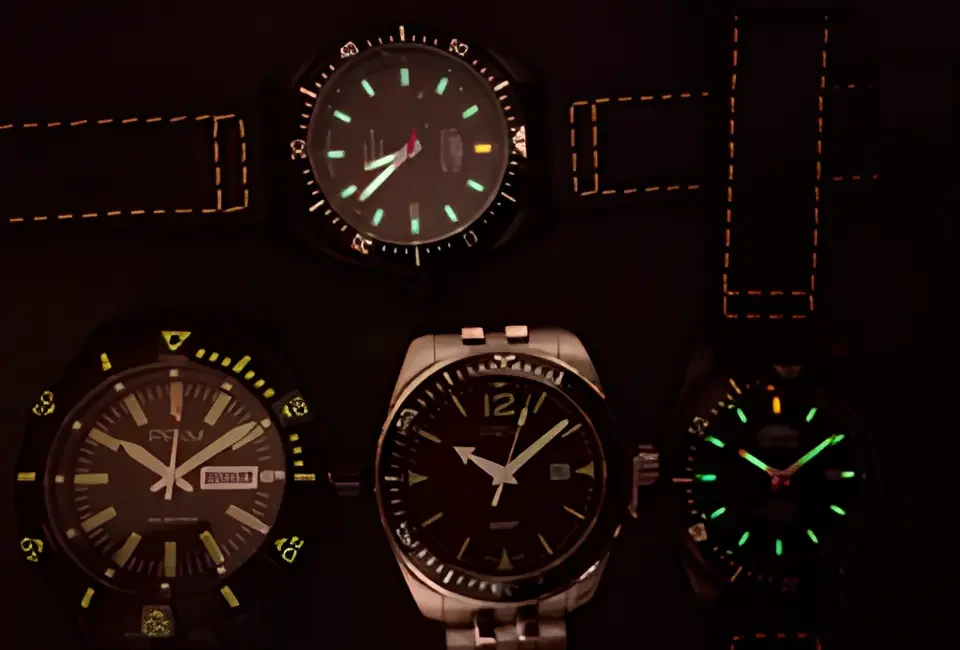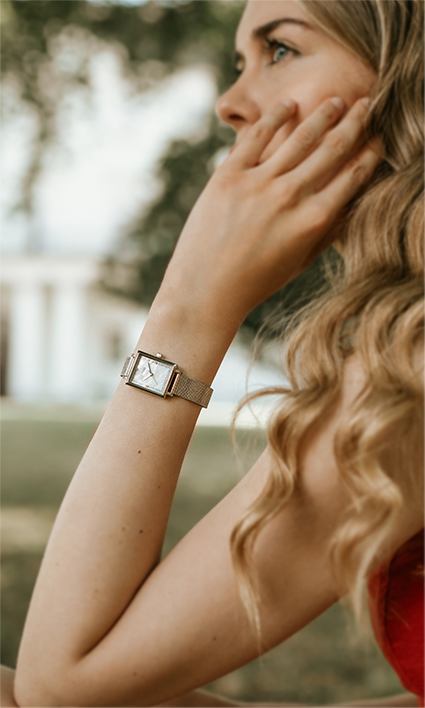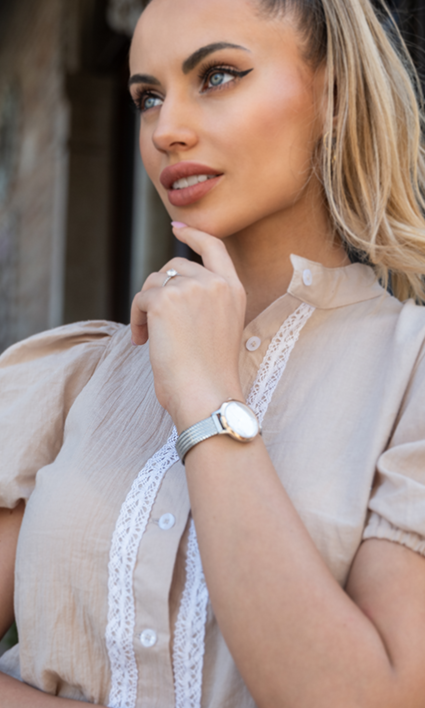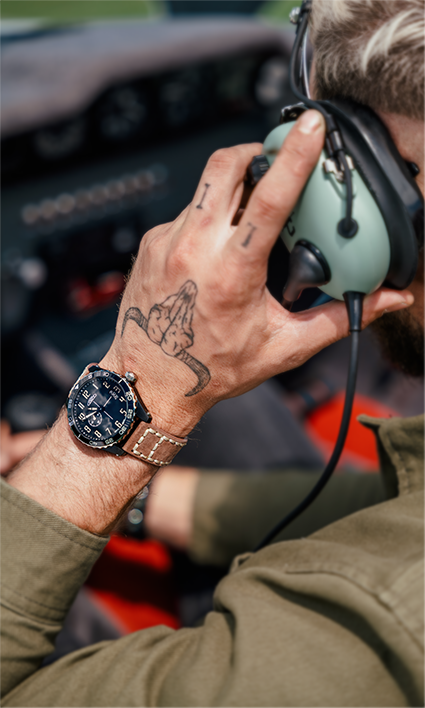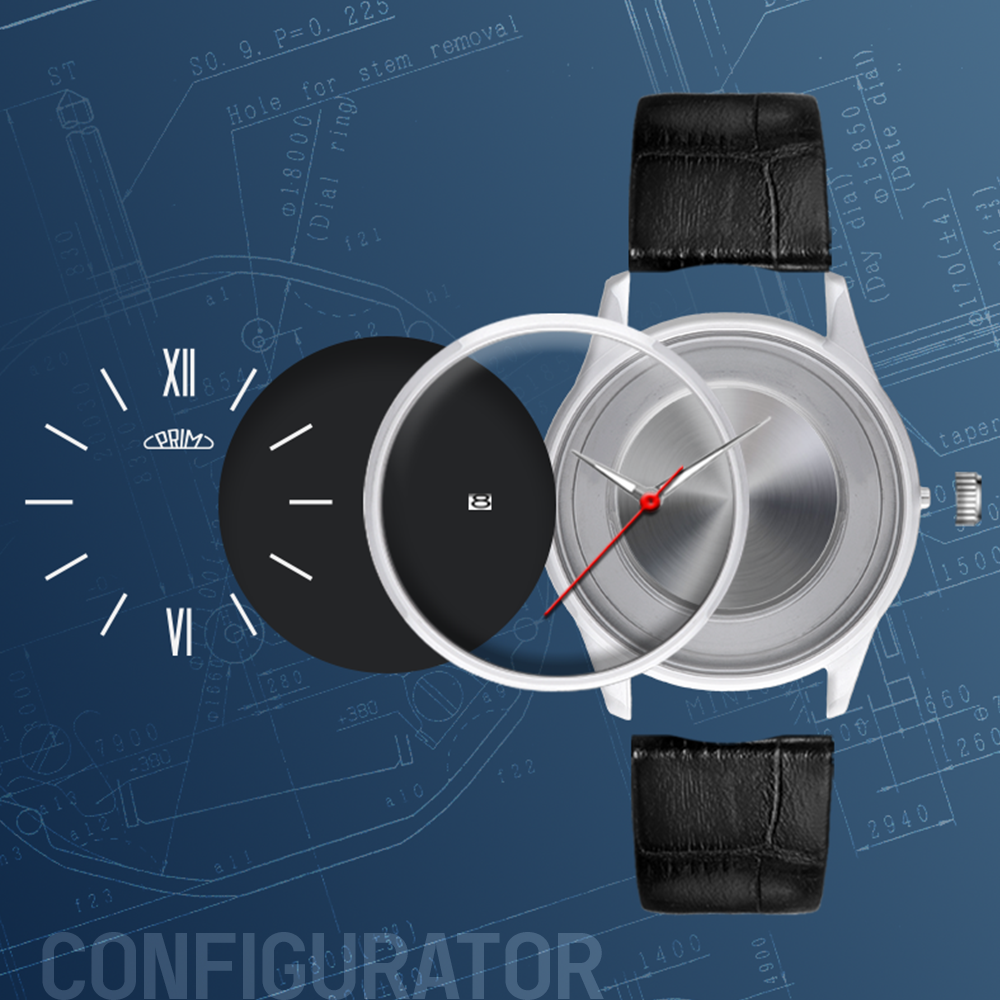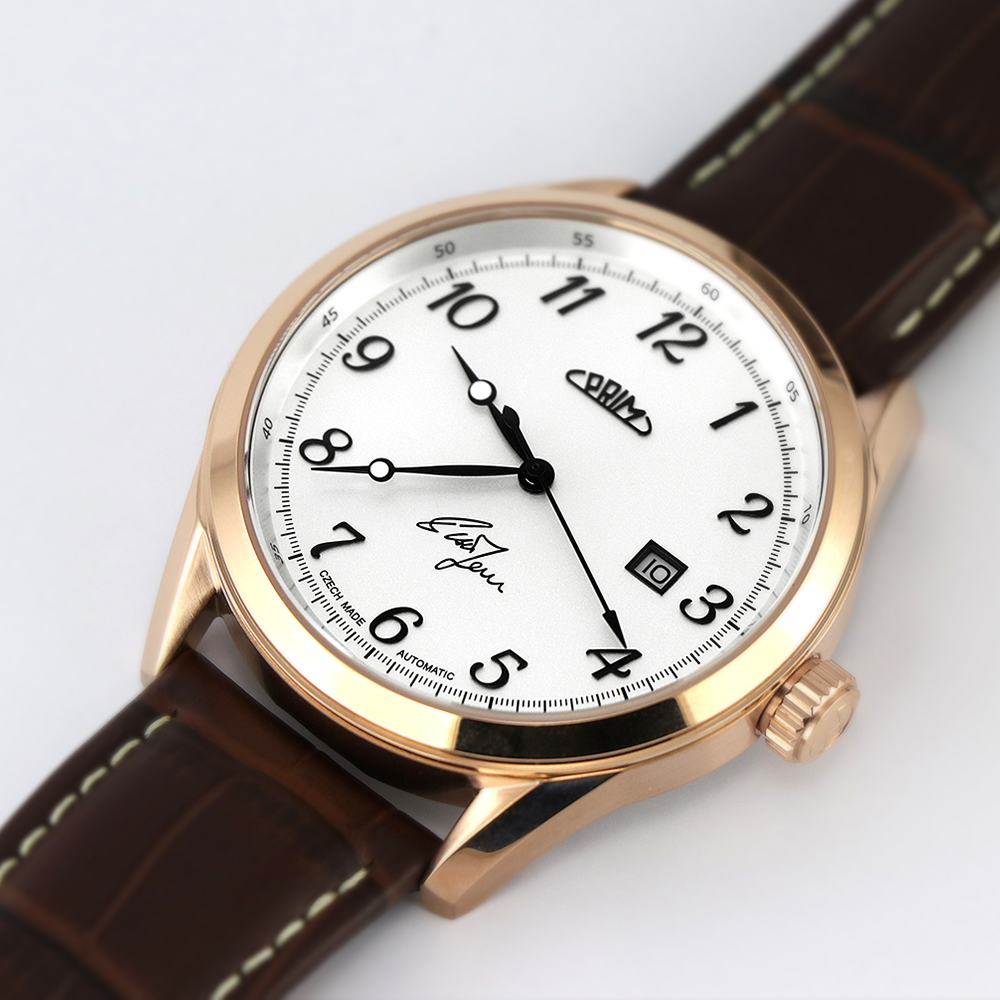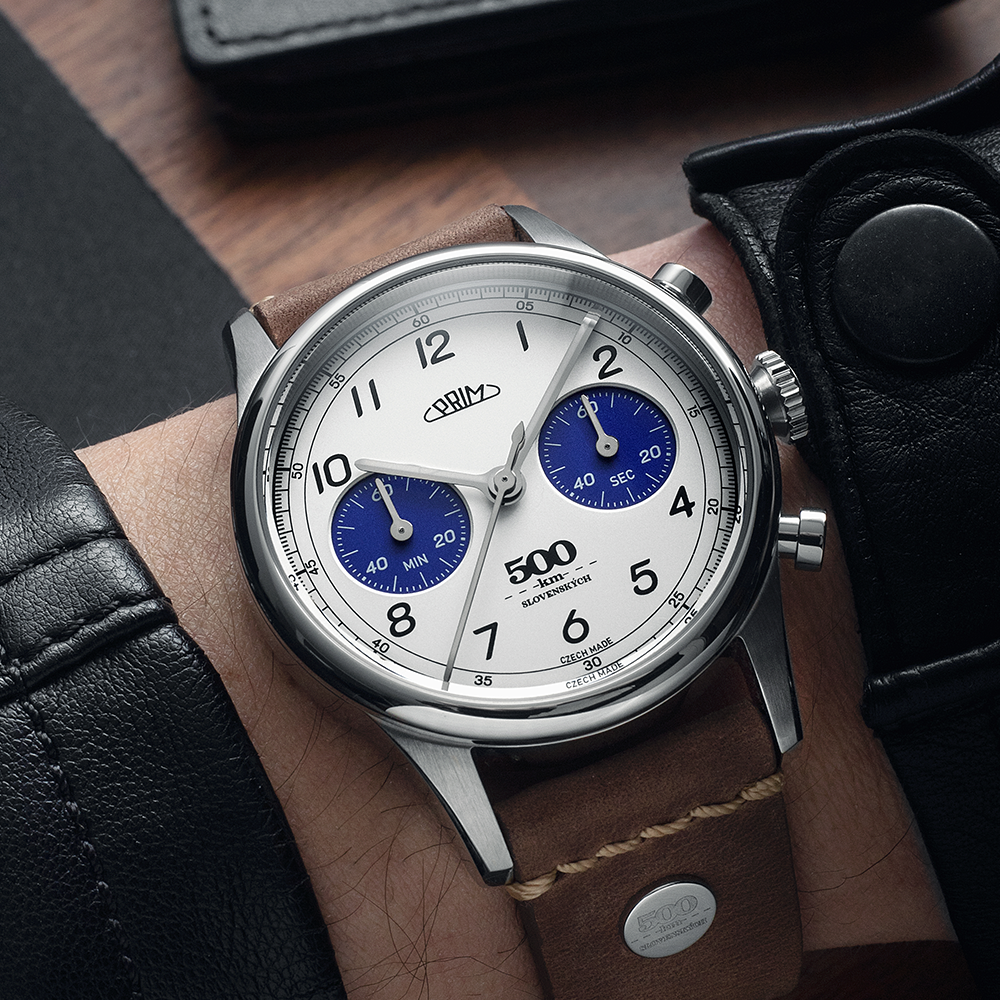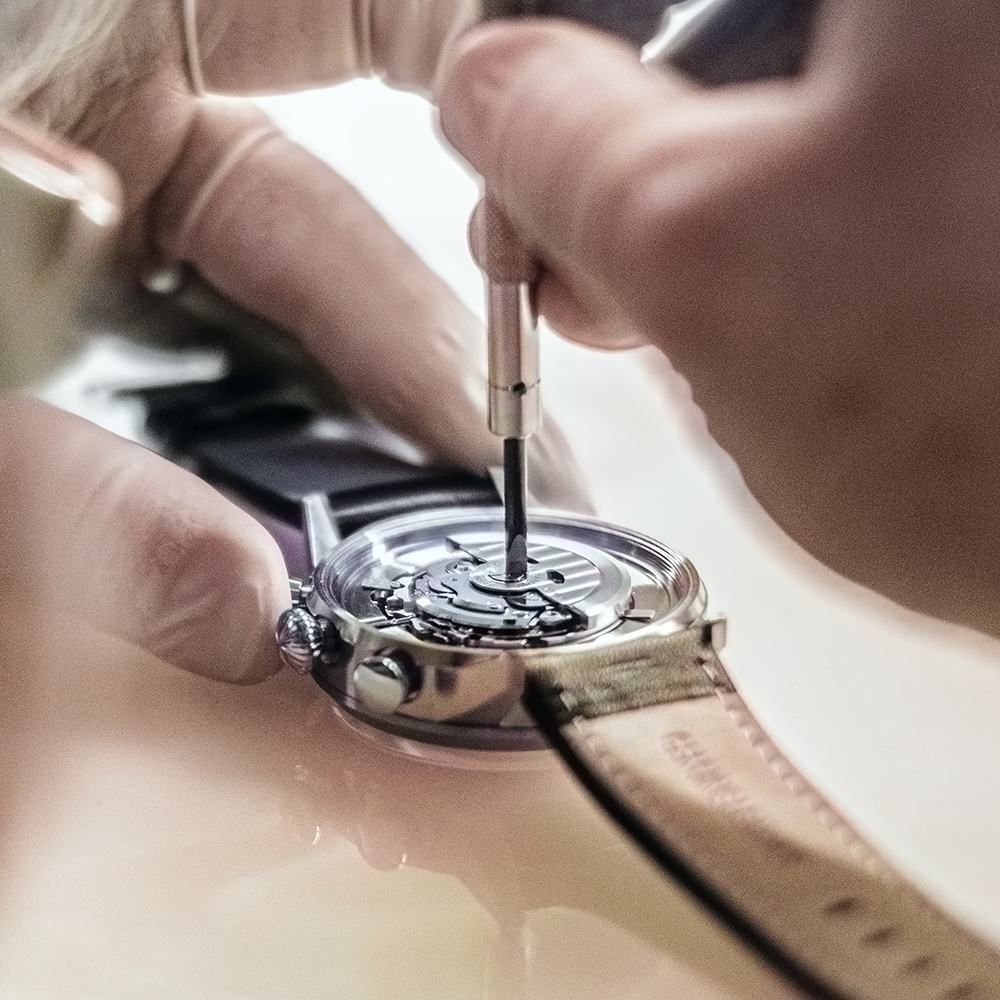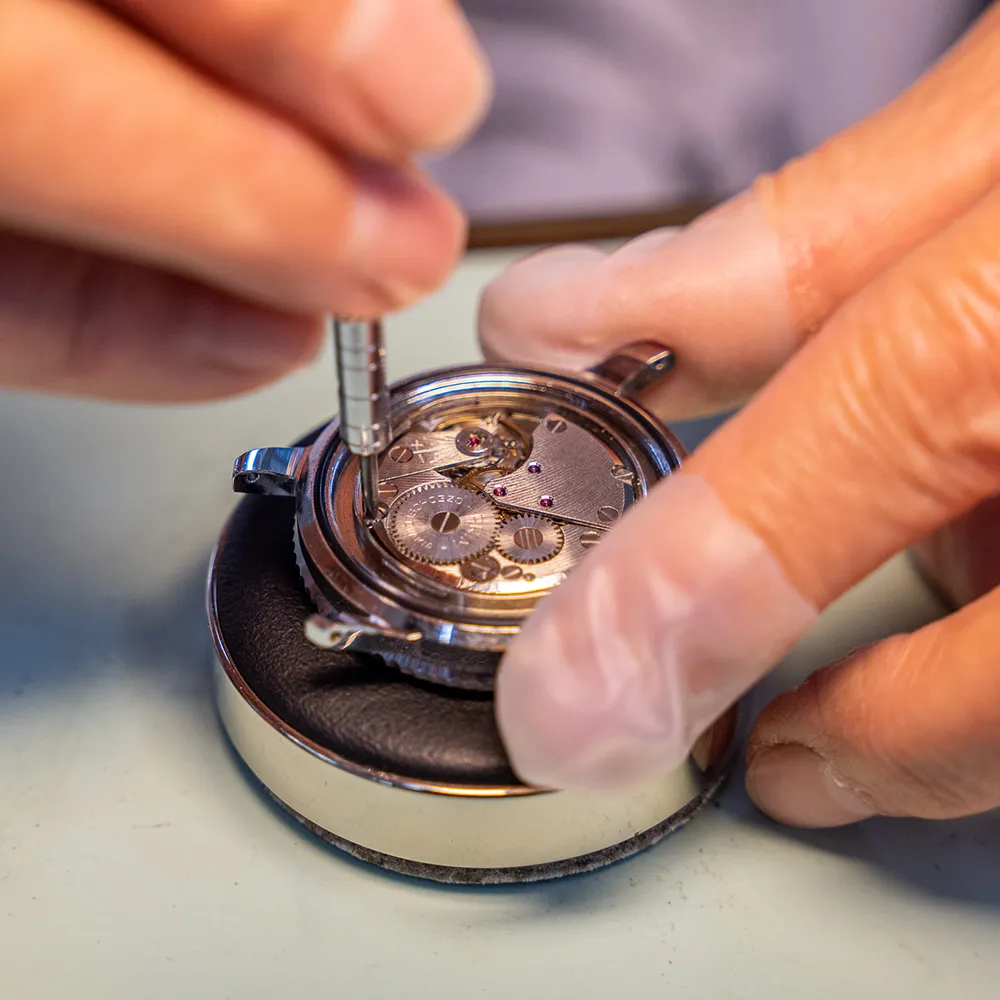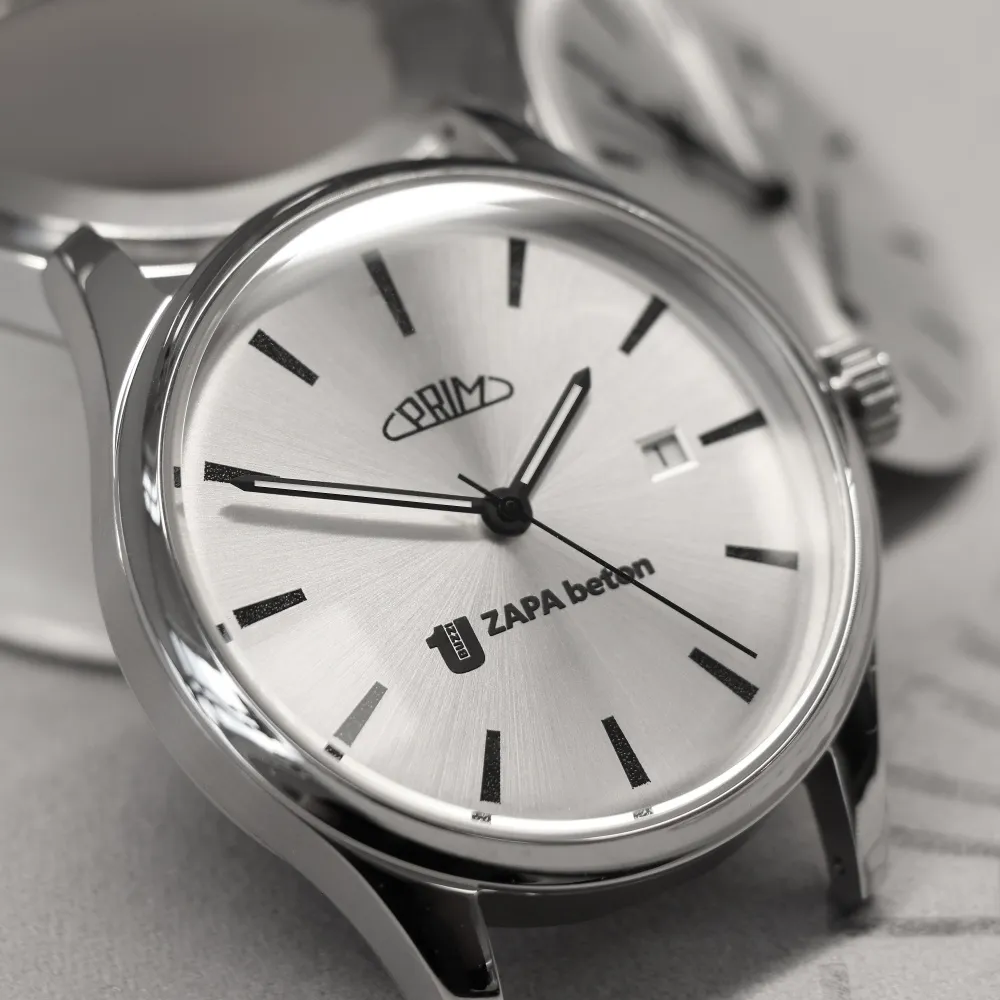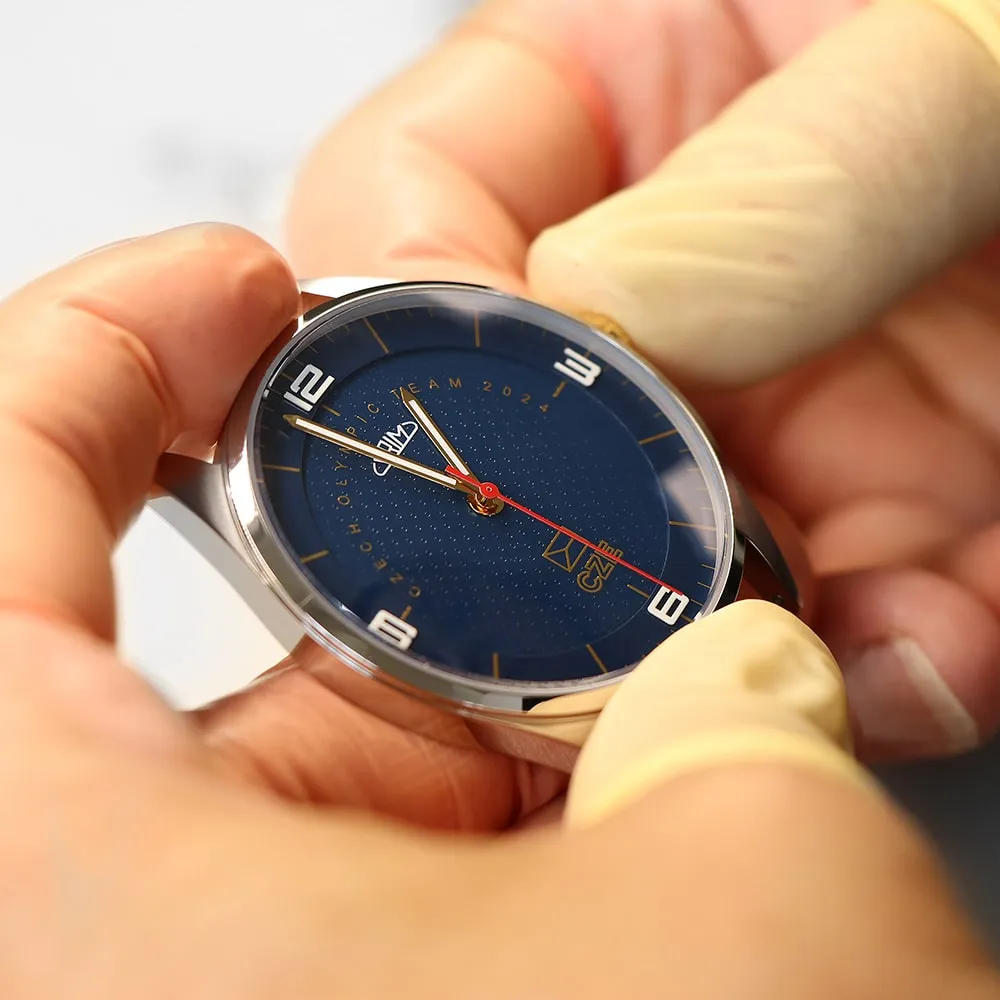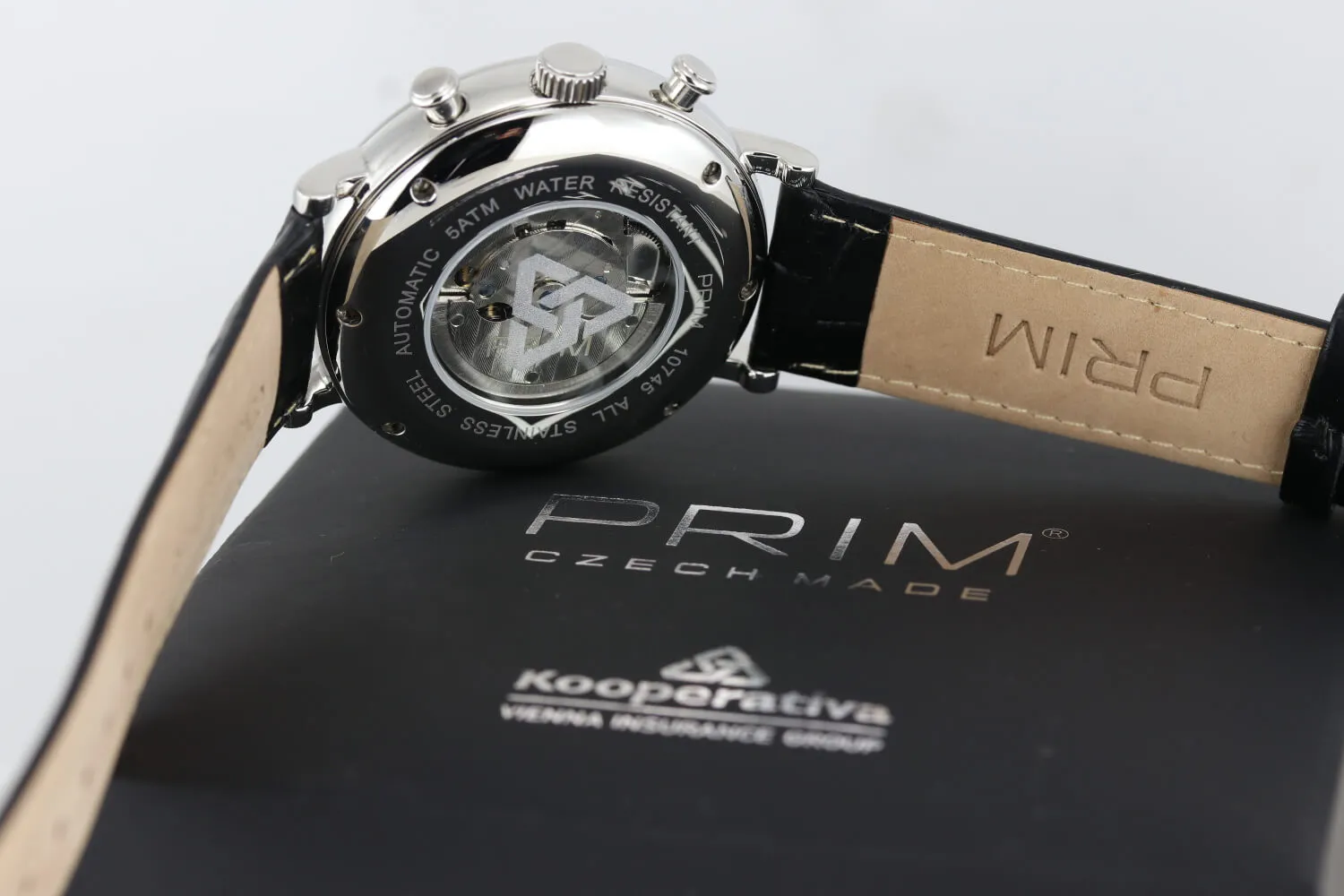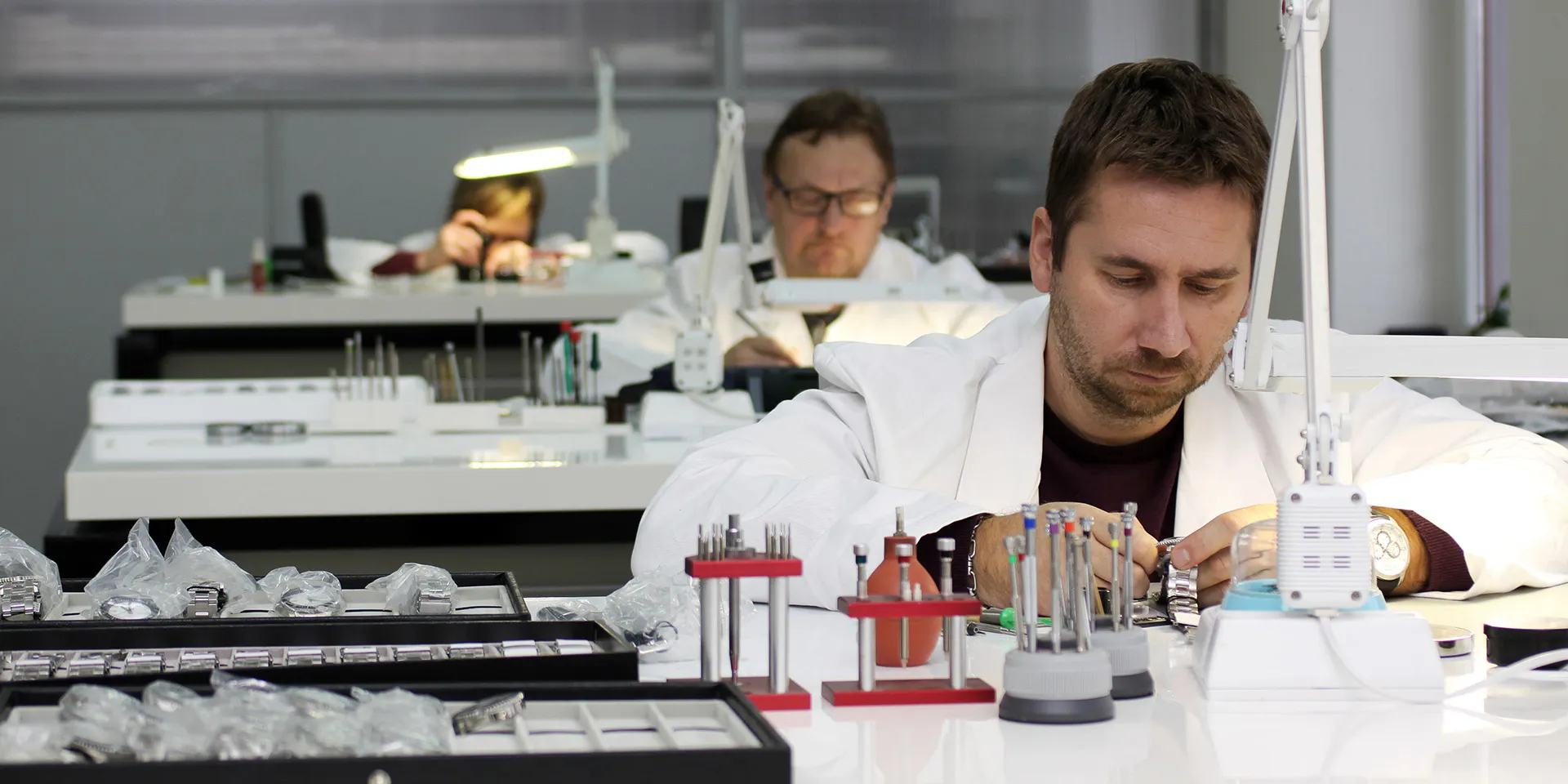
Watch maintenance and care
BASIC RULES FOR WATCH CARE:
- keep your watch clean
- visit the service center regularly to check the water tightness
- have your automatic movement cleaned and the oil changed regularly (performed as part of general maintenance, every 2-5 years)
- try to avoid strong impacts
- do not expose the watch to excessively hot or salty water
- for quartz watches, monitor the battery life
- do not expose the watch to long-term exposure to magnetic fields (e.g. speakers, electronics)
- follow the rules for watches – do not turn the hands counterclockwise, do not turn the date-day between 12 and 4 a.m. (risk of damaging the movement)
WHEN SHOULD YOU NOT CHANGE THE DATE ON YOUR WATCH?
The time between nine o’clock in the evening and three o’clock in the morning is the period when the date on the watch should not be changed.
Winding a mechanical watch to set the time seems simple. But did you know that something as simple as changing the date to the wrong time can actually damage your movement? There are situations when it is not appropriate to change the date on your watch. So when should you not change the date on your watch? In general, there are at least two things you should know about setting the time on a mechanical watch. First, always make sure to turn the hands clockwise. Second, don’t set the date within 3 hours of midnight. That’s it!
When should you not change the date on your watch?
There is a period when it is not advisable to change the date on your watch. This period is called the “danger zone” which refers to the time when the automatic date change mechanism is activated, usually between 9:00 PM and 3:00 AM. During this time, attempting to manually set the date can disturb the delicate gears that are responsible for changing the date, which can lead to their misalignment or damage. We recommend adjusting the date when the hour hand is somewhere in the lower half of the dial, but if you want to be on the safe side, change the date around 5:00 AM (in the morning or evening).
So why is it wrong to change the date during this period?
All the mechanical components for changing the date work together to gain energy and torque, which starts around 9:00 p.m. In some watches using a conventional date and day change mechanism, they remain active until approximately 3:00 a.m. Therefore, using the quick-set date system within this time frame puts a strain on the gears, which the watch is not designed to do. A separate system is responsible for driving the date wheel forward when manually setting it. Doing so may damage the automatic date and day change mechanism, which usually operates around midnight. It is therefore advisable to keep the hour hand in the position towards the bottom of the dial before starting to change the date.
The best time to change the date on your watch:
As mentioned, it is recommended to adjust the date when the hands are somewhere at the bottom of the dial. To be precise, it is best to change the date around 5:00 a.m. or 5:00 p.m., it doesn’t matter. When the watch shows 5:00 a.m., the regular date change mechanism is completely disengaged, and the half-time and instantaneous mechanisms are disengaged much earlier. On the contrary, at 5:00 p.m., none of the date change mechanisms have started working to accumulate power and torque.
HOW TO CARE FOR AUTOMATIC/MECHANICAL WATCHES?
MANUAL ROLLING
When worn normally, an automatic watch will wind itself with the movement of your wrist. However, if you do not wear it for a long time and it stops, you will need to set the time and wind the watch manually for the first time before using it again. To do this, simply turn the crown about 20 times towards 12 o’clock.
POWER RESERVE AND WINDER
Every automatic movement has a certain power reserve. The watch must be worn for at least 8 to 10 hours a day to maintain the manufacturer’s specified power reserve at its maximum. If you put the watch away for longer than its current power reserve, it will stop and you will have to reset it before wearing it again. For example, if you put a watch with a power reserve of 28 to 42 hours away on Friday evening, it will no longer be working on Monday morning. If you don’t wear your watch every day and want to avoid repeatedly setting the time, you can buy a so-called winder from us. The watch moves in it and is thus continuously wound. On Friday evening, you simply place it in the winder and set the desired rhythm. Your watch is wound over the weekend and is immediately ready for use on Monday morning.
REGULAR SERVICE AND ULTRASONIC CLEANING
Mechanical movements require regular maintenance and inspection at authorized service centers – this is the only way to ensure accurate operation within the permitted deviation for a given model or brand. Compared to quartz movements, mechanical watches are much more sensitive to various factors such as gravity, impacts during normal use, magnetism, vibrations or temperature changes. In the event of a greater deviation in operation, we recommend visiting an authorized service center. Similar to quartz watches, it is a good idea to have mechanical watches cleaned using ultrasound at least once every 1-3 years.
ULTRASONIC CLEANING
An authorized service center will not only replace the battery and check the watch’s seals, but they can also clean the case and bracelet in an ultrasonic bath. To maintain the attractive appearance of your watch, it is a good idea to have it cleaned in this way at least once a year. Ultrasonic treatment not only helps to remove all dirt from the case and bracelet, but also extends the life of the watch, especially its moving parts. This is doubly true for the bracelet, as dirt that settles inside can cause excessive friction between individual parts and damage them.
Mechanical watches
This type of watch movement requires more attention than other mechanisms. Always remove the watch from your wrist when winding it. Regular service inspections should be a given for these types of watches, ideally every 2 to 5 years. It should be kept in mind that these types of watches are less resistant to shocks and vibrations and also have less accuracy than battery-powered watches. Mechanical watches require regular winding, automatic watches need to be kept running through activity, wearing. The power reserve when fully wound is at least 42 hours, then it needs to be rewound or worn. Fully winding a watch does not guarantee its all-day wear during sedentary work or low activity, it simply depends on the movements of the hand on which you wear the watch.
Quartz watch – battery replacement
The movement of a quartz watch is powered by a battery and therefore does not need to be wound. However, the battery needs to be replaced regularly, at the latest after its service life has expired. This is usually no longer than two years. Always have the battery in your watch replaced by an authorized service center. Never try to replace it yourself at home. The battery life is around 24 months (remember that the watch was manufactured much earlier than you bought it, so the battery may have been in the watch for longer). However, the life depends on various factors, such as the type of movement used. Watches with a chronograph consume more energy than watches without one. Always have a dead battery removed as soon as possible. If it is left inside the watch for too long, it can cause serious damage to the mechanism.
STRAP CARE
If you plan to use your watch in water or suffer from excessive sweating, definitely avoid a leather strap. Leather is not a friend of water, so steel or rubber straps are more suitable in this case. Leather straps have a lifespan of about a year to a year and a half under normal use. After this period, we recommend replacing it with a new one. The elasticity and color of the skin are mainly affected by humidity, skin acidity, sweat, chemicals, sunlight, and the level of wear.
STOPWATCH ADJUSTMENT
Adjusting the chronograph hands to the zero position
Example:
One of the chronograph hands is not at zero position and needs to be adjusted (e.g. after battery replacement)
- Pull the crown out to position III
- Press buttons A and B simultaneously for at least 2 seconds (the second hand will start rotating 360° → correction mode is activated)
Setting the second hand
Short press of button A – moves the hand one step
Long press of button A – continuous hand movement
Press the B button to move to the next setting
Hour hand setting – for the 5030.D stand, the pointer is at the 6 o’clock position
Short press of button A – moves the hand one step
Long press of button A – continuous hand movement
Press the B button to move to the next setting
Setting the minute hand (pointer at 9 o’clock)
Short press of button A – moves the hand one step
Long press of button A – continuous hand movement
Then return the crown to position I.
Chronograph setting is complete (can be done at any time)
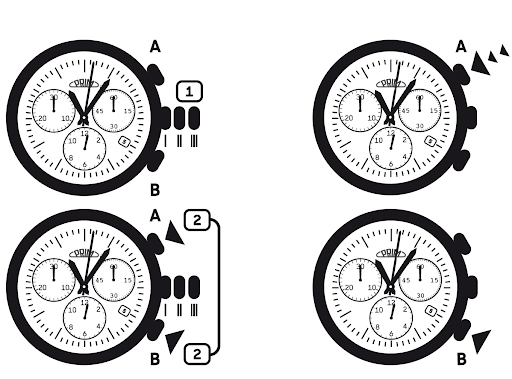
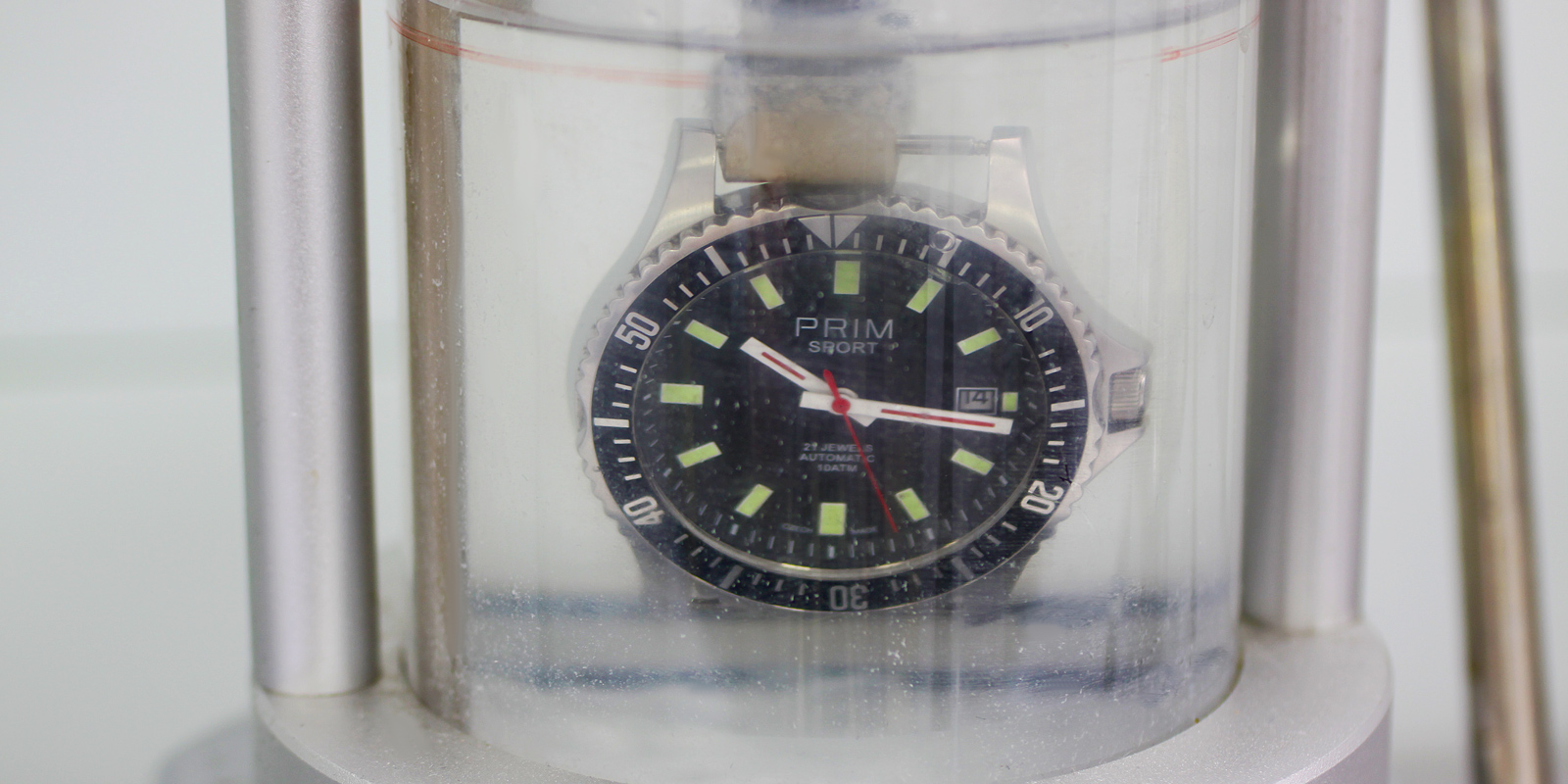
Water resistance
Water resistance table
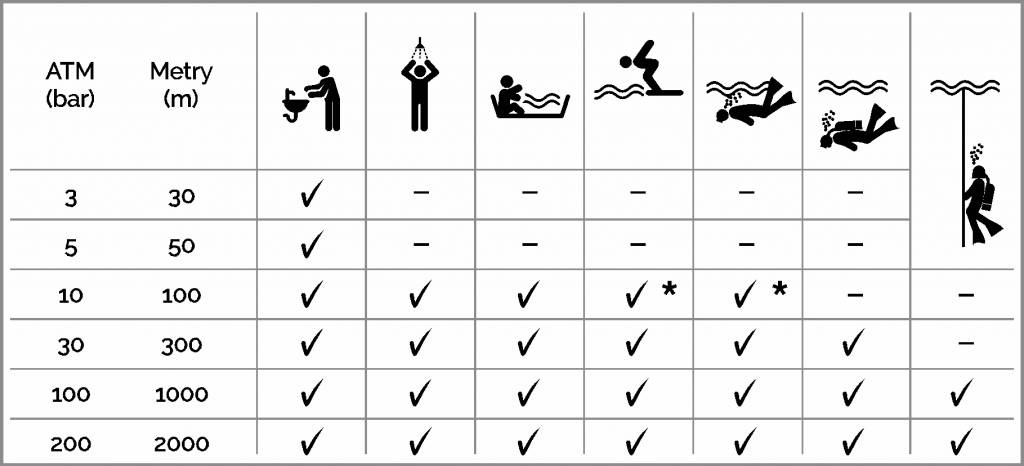
* models without a screw-down crown are only recommended for showering and occasional surface swimming, for regular swimming we recommend only models with a screw-down crown
Using the watch in water
- Watches with a screw-down crown – the crown must always be tightened tightly (if it is not, water will get into the watch).
- Never press the chronograph buttons in the water, or you will not move the crown!
Watch manufacturers list the three most common levels of water resistance:
For dives to greater depths, it is necessary to use special diving watches with declared greater water resistance of 20ATM, 30ATM, 50ATM, etc.
CONTACT WITH SALT WATER
If you go swimming with your watch in the sea, we recommend rinsing it with drinking water afterwards to remove any salt deposits. After returning from vacation, it is best to visit an authorized service center and have your watch cleaned with ultrasound – this will remove any remaining salt particles that are not good for your watch.
SUDDEN TEMPERATURE CHANGES
Every watch does not tolerate sudden changes in temperature. Therefore, we definitely do not recommend taking it to a sauna or steam room. When showering or swimming with a waterproof watch, it is important to avoid sudden changes in water temperature. If you are going to the sea with your watch in the summer, for example, rub it with water first to reduce the temperature shock.
SMOOTH AND QUIET OPERATION
Clocks and alarm clocks with a smooth-running movement (three-hand) are characterized by the fact that the second hand moves smoothly, i.e. it does not “jump” and therefore does not tick. It is sometimes mistakenly referred to as “quiet running”, but this designation is misleading. Even smoothly running clocks make a quiet sound, and its noise level depends on both the design of the clock and the surface on which the clock is hung or on which the alarm clock stands.
Instructions for use and basic rules for watch care
(standard information after purchasing a watch)
You have just become the owner of a watch from our collection. In order for the watch to serve you for a long time and retain its beautiful appearance, it is necessary to follow certain principles and, when purchasing, choose a watch that matches the purpose of its use.
The movements used in watches are quartz or mechanical.
- Quartz watches – battery-powered, achieve an accuracy of approximately +/- 15 seconds per month. The usual battery life in these watches is about 1 – 2 years.
- Watches with mechanical movements, unless otherwise stated, are accurate to +/- 30 seconds per 24 hours and should last for at least 10 hours when fully wound.
Battery
is inserted into quartz watches during the manufacturing process. It takes a different amount of time before they reach the consumer. Therefore, they may stop working sooner than one year. A discharged battery during the warranty period is not a reason for a complaint. Never replace the battery yourself, ask a watch repair service.
Materials used and surface treatment
of the watch, movement or strap significantly affect the price of the watch. The highest quality materials used to make watches are 316L stainless steel, titanium, and ceramic materials. Various alloys are of lower quality in terms of durability. Steel watches are marked with the words Stainless steel or All stainless steel on the caseback. If stainless steel is used only for the back cover, it is stated Stainless steel back. Watches made of alloy are unmarked or have the inscription Base metal. Titanium materials are marked with the word Titanium. Watches made of 316L steel have an almost unlimited lifespan and do not corrode if treated carefully. In contrast, alloy watches can start to corrode in a very short time. Within just a few months, watches made from the cheapest materials can show wear and tear. Corrosion manifests itself as a change in color or peeling of the material. The time it takes for wear to become apparent is individual and depends on the method of use and, above all, on the aggressiveness of the watch owner’s sweat. As a rule, only watches in a higher price category, where the most advanced gold-plating technologies (PVD, IPG, etc.) are used, can the surface of the watch last in an unchanged state for several years. Changes in the watch’s surface, color shade or shine are caused by the gradual wear of the materials used. This is wear and tear of the product due to normal use. The time in which these changes occur may be much shorter than the warranty period.
The quality of the glass on a watch is proportional to the price of the watch. Sapphire glass is the most expensive and of the highest quality. This is followed by mineral glass with various surface treatments, regular glass, and the softest are plastic glass substitutes. However, keep in mind that even the hardest glass can be broken and scratched if handled roughly. Scratched, broken or cracked glass is considered mechanical damage and is not a reason for a complaint.
Fashion watches often have various decorative elements, glass components (Swarovski, Preciosa, …) or cubic zirconias on their surface. These watches are intended for occasional, occasional wear and are not at all suitable for use during sports, housework or other physical activity, where the watch could be hit, come into contact with water or other liquids. In particular, chemicals contained in cosmetics, hairsprays, perfumes and others dissolve the adhesives with which the stones are glued, as a result of which the glued components come off and peel off. Such watches, even though they are labeled as water-resistant, should not come into contact with water! It is recommended to put these watches away even when washing hands. The stones are usually peeled off due to improper use. Impacts on decorative elements will often cause them to loosen and then fall out.
Straps are the most stressed part of a watch. Their lifespan depends on how the watch is used. The lifespan of a strap may be shorter than the warranty period. Strap wear and replacement within the warranty period is not a reason for a complaint. In most cases, a worn strap can be replaced with an original or non-original part.
Cleaning and care of the watch – you can clean the watch with a dry soft cloth. Rinse waterproof watches with water and wipe dry. Never use any solvents! Never clean the watch in an ultrasonic cleaner! If the watch is heavily soiled, ask a service center for a thorough cleaning. Have a mechanical watch checked, cleaned and adjusted by a service center at least once every two years.
!!! If the watch has a special operating manual, please follow the instructions in this manual !!!
Glass materials and types
Mineral glass (Silicon glass)
This is the most commonly used glass on PRIM watches. The main advantage is the price/quality ratio. Another advantage is that this glass is easier to machine than is the case with sapphire glass. While not as hard as sapphire, it is sufficiently resistant for normal use. The properties of mineral glass have another advantage – it refracts light at a much softer angle than sapphire glass.
Sapphire glass
Many PRIM models use sapphire glass (if it is not included, we are able to make sapphire glass to order). This is synthetic sapphire, a clear corundum, which is very scratch-resistant (sapphire glass can be scratched or broken during normal wear). On the Mohs scale, sapphire’s hardness corresponds to a level of 9, which is only one level lower than diamond.
Today, sapphire glass is the material of choice for many types of watches. With the development of technology, it is now possible to produce these glasses with anti-reflective finishes. It involves a method of coating one or both sides with an anti-reflective coating.
Convex glass
If you have purchased a watch with a (bulging) convex glass, it is important to take proper care of it. Convex glass is more susceptible to all kinds of impacts, abrasions or scratches. Sedentary work is no guarantee that you will not accidentally hit the corner of a table, door frame or wall without knowing it. Subsequently, the glass may not break immediately, but due to changes in temperature and pressure, the glass may break after a few hours or days. All our glass is tested and the watch also undergoes a pressure test before being sold.
1) Classic convex glass
They look like a classic lens with a single radius of curvature.
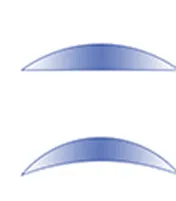
2) Non-standard convex glass
(Diplomat, Retro Automatic models, etc.) The glass is not classically convex, but arched like a vault. Or simply domed glass. This was the most widely used method in the past and was made of acrylic (for example, on old PRIM models). Although it was flexible, it scratched very quickly and the watch did not look good. Today, we use mineral, which is very scratch-resistant, but not as flexible as acrylic.
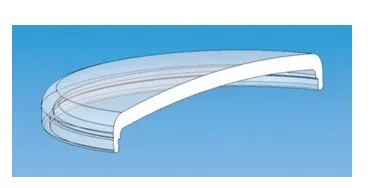
PRIM watch case size chart, strap width
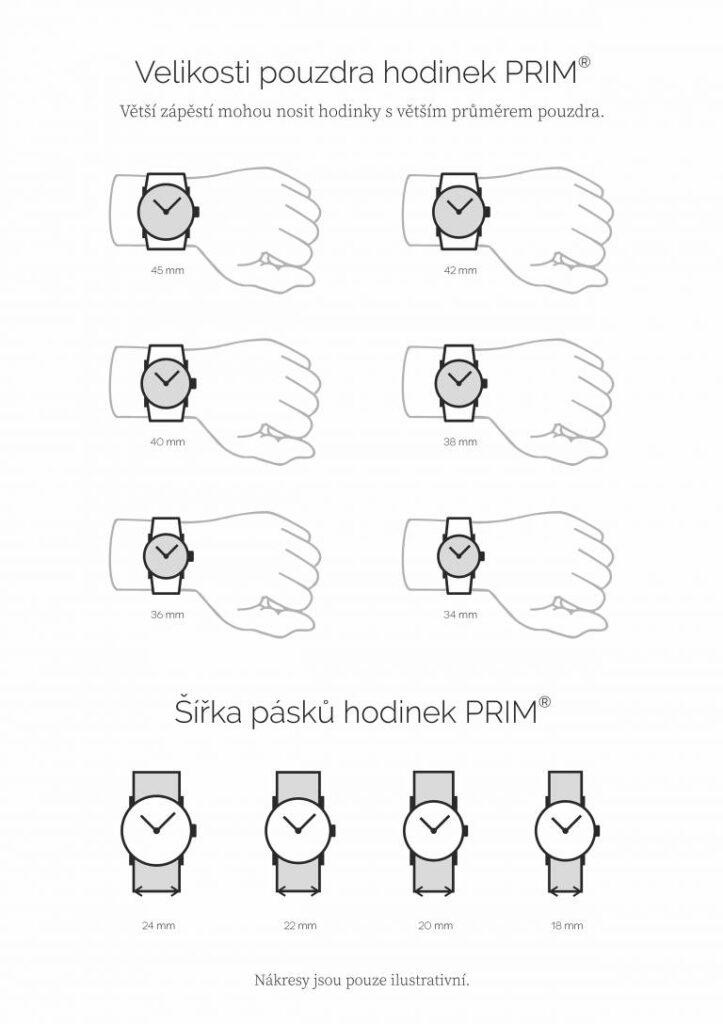
PRIM wall clock sizes

Information about the machines
MYIOTA 8215
If you feel that the second hand of your watch is stuck, we assure you that this is not a defect, but a normal condition. In watches equipped with the Miyota 8215 movement, the second hand moves in this characteristic way, because the so-called indirect drive system is used. This is not a problem with the watch, it is due to the construction of this movement, which was designed this way. The movement has its own safety mechanism, which, when the watch is shaken, causes the second hand to move and stop. Then the hand moves again. The jumping of the second hand has no effect on the accuracy of the watch.
You can find more about the Indirect Drive system, including a video, in this article.
MIYOTA 8215 (8205, 8217, 9015 and others)
The manufacturer is gradually changing the design of its movements in other models that we currently use. It is not excluded that a watch model with the same designation may be equipped with a movement still in its original design or already modified with a new design. The new movement system was developed not only for even more precise operation of the watch, but especially so that the mechanism itself is protected from the influence of various shocks, vibrations or impacts. Nevertheless, it is really important to remember that this is a sensitive mechanism that needs to be treated with care.
Tritium vs Luminescent Layer
The tritium ampoules that illuminate the indexes and hands of our watches from the PRIM Sport Tritium series have different properties than standard technologies such as luminescent colors. Thanks to a layer of luminescent paint or tritium ampoules, the indices will be highlighted in low light conditions or in the dark. The classic mixture of luminescent paint is applied in different layers. It affects the luminosity and duration of luminosity, or the light emission it absorbs from another light source. The emission of the luminescent color is very intense after illumination, unlike tritium ampoules, see photo taken immediately after illumination, approximately within 1 minute. Watches using tritium are at the top and right.
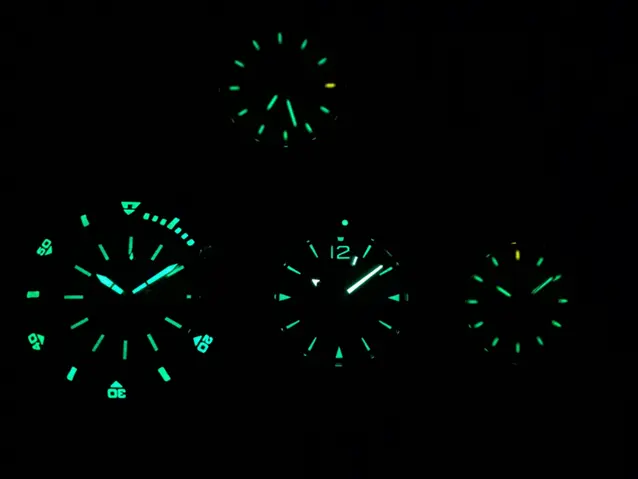
After a few minutes, the radiation is roughly the same for both variants. See photos approx. 5 min. after illumination.
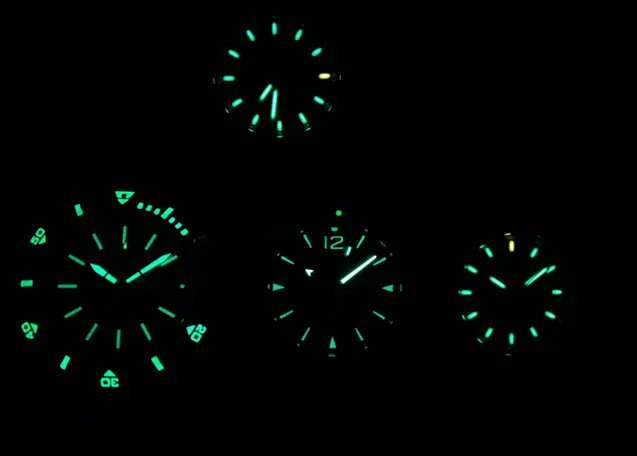
The third image shows how luminescent indices emit almost no light, unlike tritium ampoules. See photos about 25 minutes after exposure.
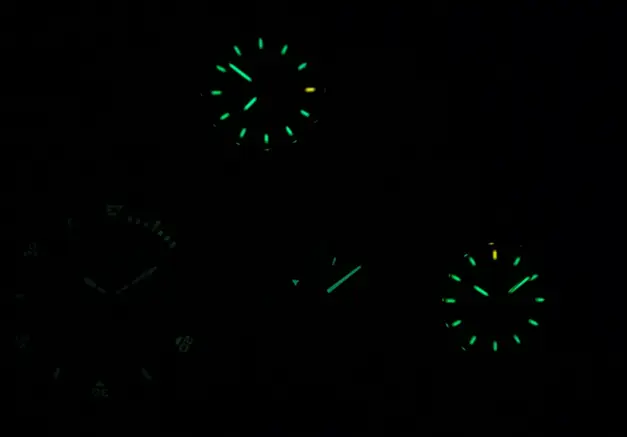
And that’s how it continues to be. The luminescent indexes emit less and less light, but the tritium ampoules still shine with the same intensity. With luminescent indexes, of course, it depends on what kind of light the indexes will be illuminated with. Artificial or sunlight and for how long. All of this is influenced by luminosity.
The last picture was taken 15 hours after exposure.
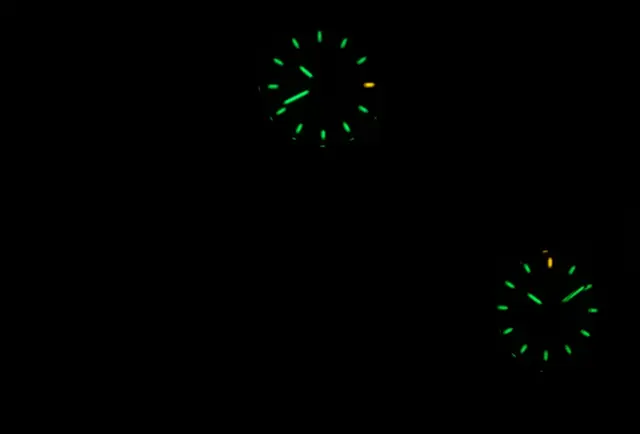
The watch was exposed to artificial light for approximately 30 seconds and the luminescence intensity is proportional to this. For more information about the tritium ampoules in our watches, please refer to the Safety and Warranty document.
The last picture was taken 15 hours after exposure.
